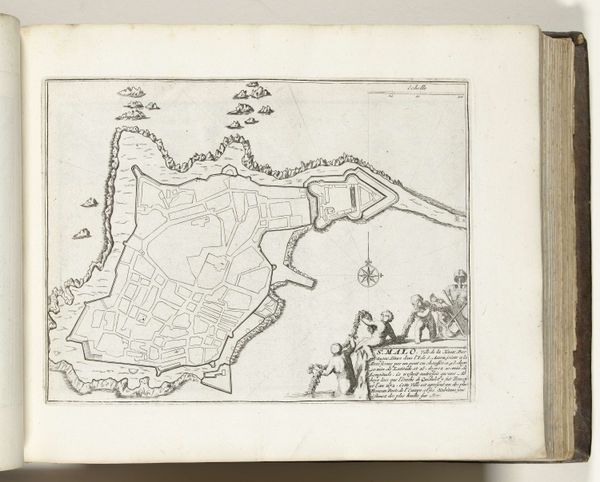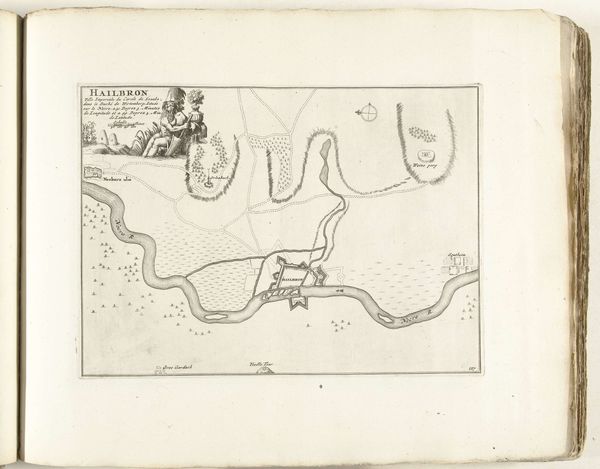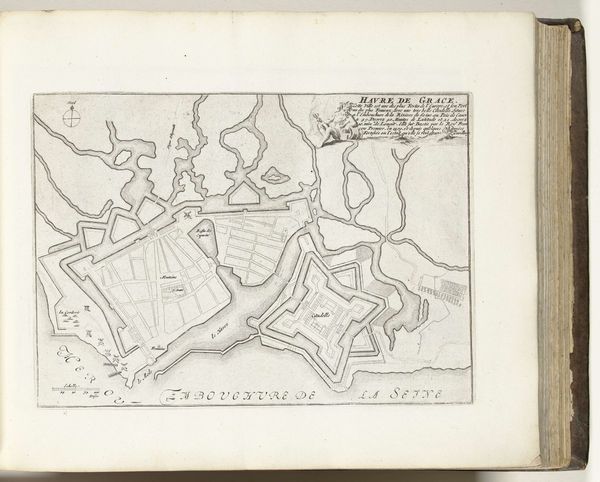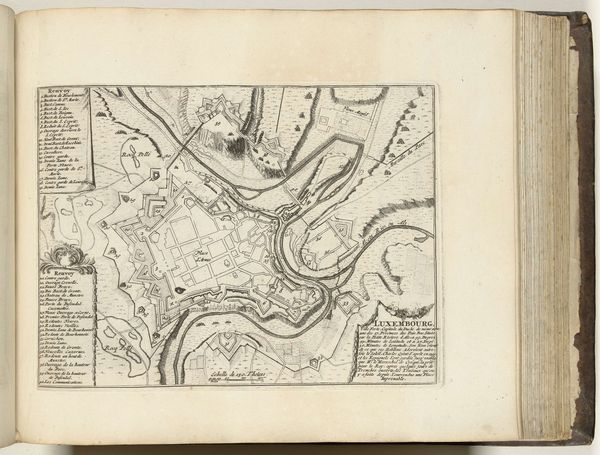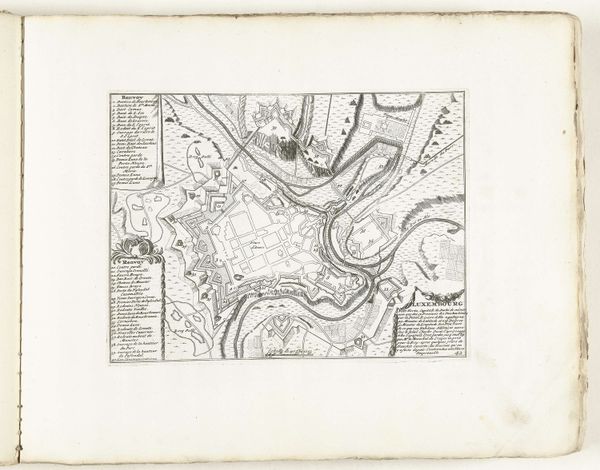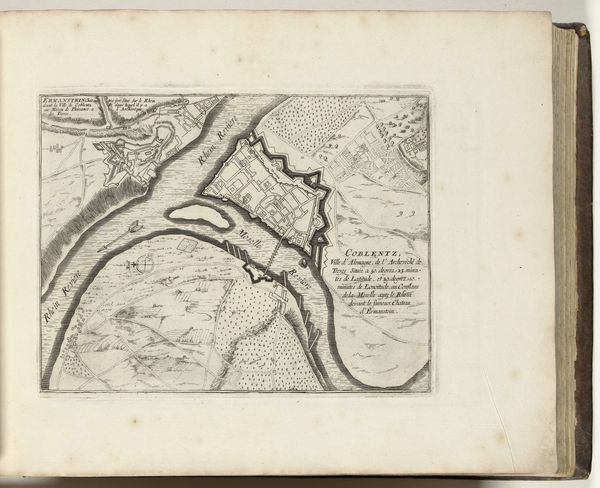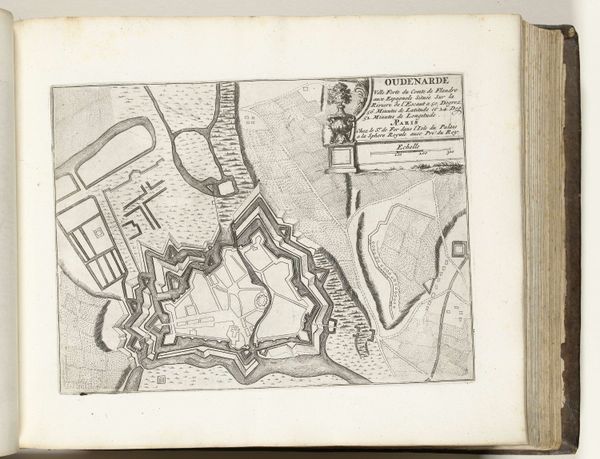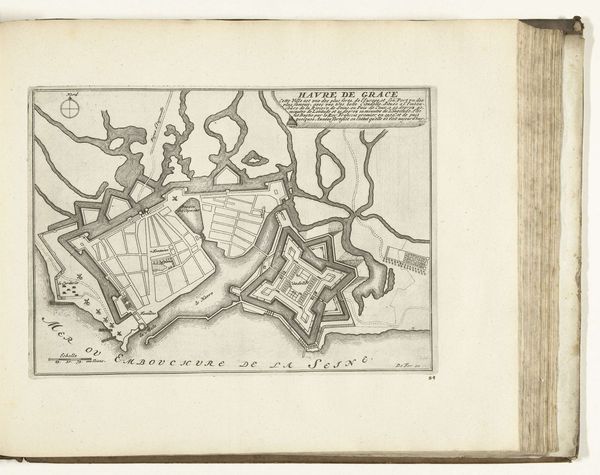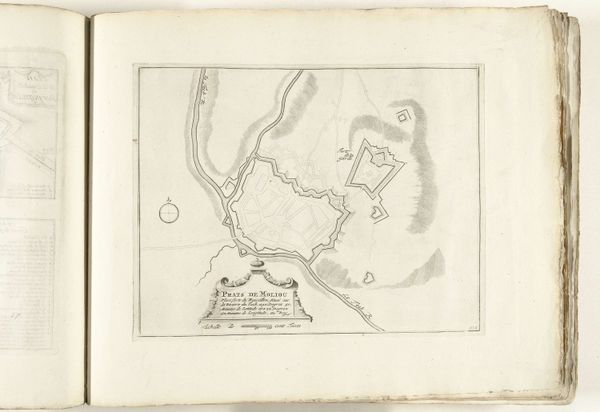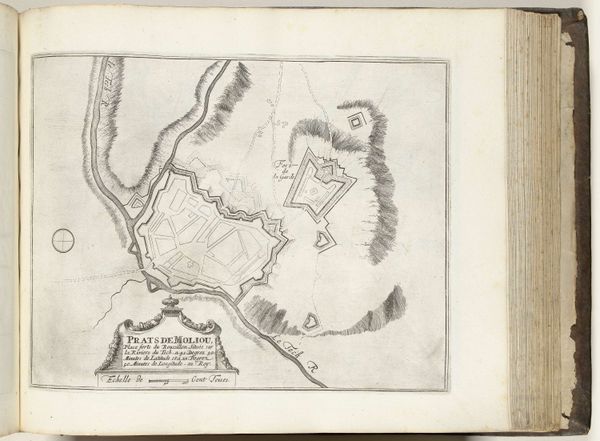
drawing, print, paper, ink, engraving
#
drawing
#
baroque
# print
#
paper
#
ink
#
history-painting
#
engraving
Dimensions: height 207 mm, width 282 mm
Copyright: Rijks Museum: Open Domain
Editor: So, this is a print titled *Plattegrond van Brest*, a map of Brest, made around 1693-1695 by an anonymous artist. It looks like ink on paper, maybe an engraving. I’m immediately struck by how the town seems both fortified and vulnerable, cradled by the river but hemmed in by these massive walls. What stands out to you? Curator: What strikes me is the tension between representation and reality. Maps aren't just neutral depictions; they're encoded with power. Notice how Brest is rendered – a city defined by its defenses. But what is the symbolic significance of that heavy fortification? Is it strength? Or perhaps anxiety? The walls speak of a history of conflict and siege. How do you see the river functioning in this imagery? Editor: Hmm, the river... initially, it seemed like a source of life, a trade route. But you’re right, it’s also part of the defense, a natural barrier shaping the city’s layout. It looks almost like the river *encloses* the city just as much as it feeds it. Curator: Exactly. It reflects the duality inherent in many symbols. Consider, too, the elaborate coat of arms in the corner. It speaks to civic pride and royal authority, anchoring Brest within the French kingdom. What emotions does the imagery trigger in you? Editor: There’s a feeling of…permanence, maybe. This sense that the city, with its walls and emblems, is intended to last. But also a fragility because it must protect itself so vigilantly. I guess cartography is a kind of visual language, after all. Curator: Precisely. It’s a language of control, of ownership, and often, of aspiration. This print not only shows Brest but also asserts a particular idea about its place in the world. Understanding its symbols unravels layers of historical consciousness. Editor: This makes me appreciate how a seemingly straightforward map can reveal deeper stories about a place. Curator: Yes. What we're seeing is how the symbolic realm constantly interacts with, and informs, our understanding of reality. A place, a history, captured in ink.
Comments
No comments
Be the first to comment and join the conversation on the ultimate creative platform.
